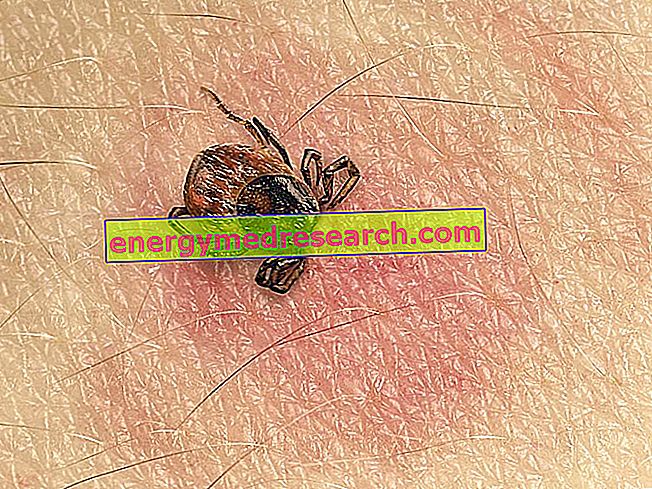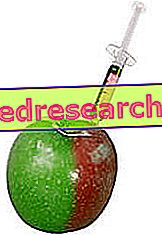Glycogen is the source of storage and reserve of glucose in animals. It is of little importance as it is rapidly transformed into lactic acid after the death of the animal; instead it represents a very important energy reserve to support the body metabolism.
Glycogen is a branched polymer of glucose (it is made up of many units of glucose joined together with alpha-1, 4 bonds and alpha-1.6 branching branches present every 8-10 residues).
Glycogen has a very compact structure deriving from the spiral winding of polysaccharide chains.

Glucose stocks readily usable by tissues for energy purposes are found mainly in the liver and skeletal muscles. While the glucose reserves contained in the liver are used to supply the various tissues, those contained in the muscles are used only locally.
The major consumers of glucose are the brain and skeletal muscle via the aerobic way. The remaining glucose is consumed by erythrocytes (red blood cells) and heart muscle.
The body obtains glucose, thanks to the diet, thanks to the amino acids in the gluconeogenetic pathway and thanks to the reconversion of lactate to the glucose (Cori cycle).
NB: Fatty acids cannot be converted into glucose.
Glucose is found in two forms in our body: in free form in the bloodstream and in branched form in the liver and muscles (reserves).
Glycogenolysis (DEGRADATION OF GLYCOGENOUS TO GLUCOSE)
Degradation of glycogen stores requires the main action of the enzyme Glycogen phosphorylase. This enzyme detaches the glucose monomers from the form 1-4 obtaining glucose monomers 1 phosphate. The advantage of this process is that the glucose obtained is already partially activated and that the reaction is strongly positive and therefore does not require ATP. (see Krebs cycle)
However, glycogen phosphorylase is not able to eliminate glucose residues from the a-1.6 branching form. Then a debranching enzyme intervenes able to split the bonds to -1.6 in glucose (10%) and in glucose 1 phosphate.
Glucose 1 phosphate produced by the action of phosphorylase must then be converted into glucose 6 phosphate thanks to phosphoglucomutase.
We know that in glycolysis the enzyme capable of transforming glucose into glucose 6 phosphate is hexokinase and that this enzyme is inhibited by an excess of product. The enzyme glucokinase is present in the liver and has a function similar to the aokinase present in the muscles but is less akin to glucose. This is because the liver uses fatty acids as its main energy source and undertakes to use sugars only after having replenished all the other tissues (a generous organ par excellence).
EPINEFRINES IN LIVER GLUCAGON MUSCLES stimulate the activation of glycogen phosphorylase which will be inhibited by an excess of ATP and activated by high concentrations of AMP. High levels of c-amp and Ca2 + favor the degradation of glycogen within the hepatocyte. The enzyme glycogenophosphorylase exists in two distinct forms: in a so-called T (less active tense) form and in a R (relaxed, more active) form.
Glycogen phosphorylase is able to bind to glycogen when it is in the R state.
This R conformation is allowed by binding to AMP while it is inhibited by binding to ATP or glucose 6 phosphate.
This enzyme is also subject to a control given by its phosphorylation.
Note: in the liver there is an enzyme absent in the skeletal muscle called glucose 6 phosphatase which transforms glucose 6 phosphate into glucose. This enzyme allows the generation of individual glucose units to maintain an optimal blood glucose level
Also interesting is the glucose alanine cycle, in fact from this amino acid present in abundance in the muscle glucose can be obtained in the liver.
When the availability of glycogen decreases in the muscles, starting from the branched chain amino acids by transamination (a process in which the amino group of amino acids passes from one amino acid to another substance forming a new amino acid) alanine is formed; the latter passes into the liver where the amino group is removed (deammination), obtaining ammonia and a carbon skeleton from which glucose is obtained which can be used as an energy source.
THE SYNTHESIS OF GLYCOGENOUS
it will not be regulated by a phosphorylase but by a glycogen synthase, an enzyme that needs high concentrations of UDP to function. Thus glycogenosynthesis is not the exact opposite of glycogenolysis
In fact, for glucose to be used by glycogen synthase it must be activated by an enzyme called UDP-glucose pyrophosphorylase. This enzyme exchanges phosphorus in position one of glucose 1 phosphate with UDP. A UDP-glucose is thus formed which is used by glycogen synthase. Key trigger of this reaction is glycogenin, an amino acid that transfers a glucose unit thanks to a tyrosine residue.
Finally, there is finally a branching enzyme that creates the correct branches between the various glucose units (alpha 1-4 and alpha 1-6).
CONTINUE: In-depth study of glycogen metabolism »



